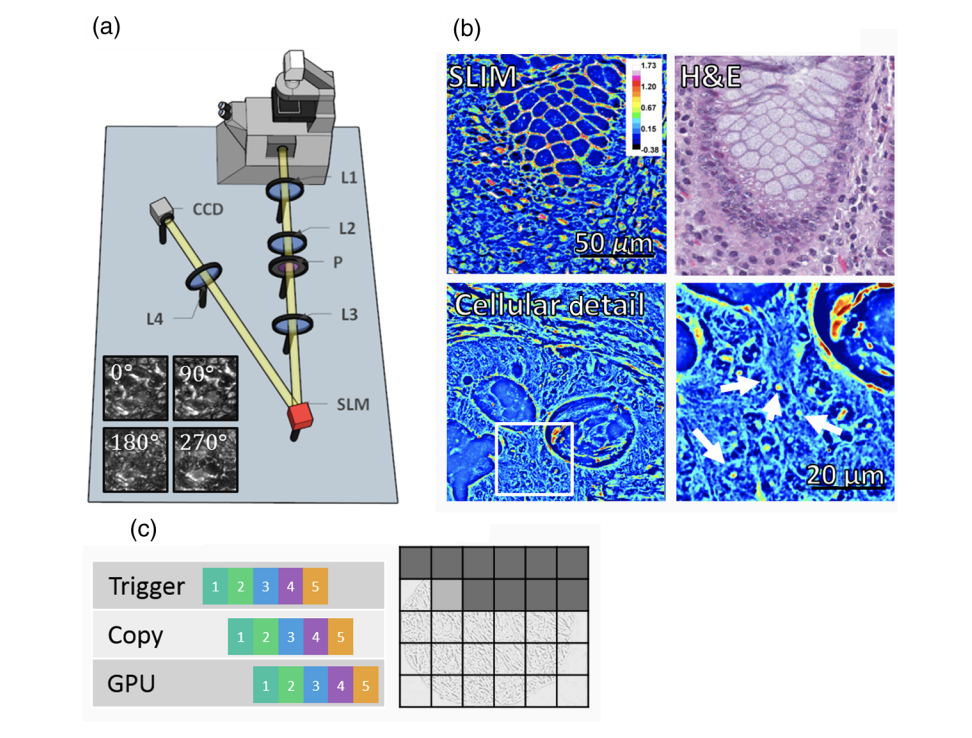LABEL-FREE TISSUE SCANNER FOR COLORECTAL CANCER SCREENING
Mikhail E. Kandel Shamira Sridharan Jon Liang Zelun Luo Kevin Han Virgilia Macias Anish Shah Roshan Patel Krishnarao Tangella Andre Kajdacsy-Balla Grace Guzman Gabriel Popescu
Journal of Biomedical Optics 066016, Vol. 22(6) 2017
![]()

The current practice of surgical pathology relies on external contrast agents to reveal tissue architecture, which is then qualitatively examined by a trained pathologist. The diagnosis is based on the comparison with standardized empirical, qualitative assessments of limited objectivity. We propose an approach to pathology based on interferometric imaging of “unstained” biopsies, which provides unique capabilities for quantitative diagnosis and automation. We developed a label-free tissue scanner based on “quantitative phase imaging,” which maps out optical path length at each point in the field of view and, thus, yields images that are sensitive to the “nanoscale” tissue architecture. Unlike analysis of stained tissue, which is qualitative in nature and affected by color balance, staining strength and imaging conditions, optical path length measurements are intrinsically quantitative, i.e., images can be compared across different instruments and clinical sites. These critical features allow us to automate the diagnosis process. We paired our interferometric optical system with highly parallelized, dedicated software algorithms for data acquisition, allowing us to image at a throughput comparable to that of commercial tissue scanners while maintaining the nanoscale sensitivity to morphology. Based on the measured phase information, we implemented software tools for autofocusing during imaging, as well as image archiving and data access. To illustrate the potential of our technology for large volume pathology screening, we established an “intrinsic marker” for colorectal disease that detects tissue with dysplasia or colorectal cancer and flags specific areas for further examination, potentially improving the efficiency of existing pathology workflows.
